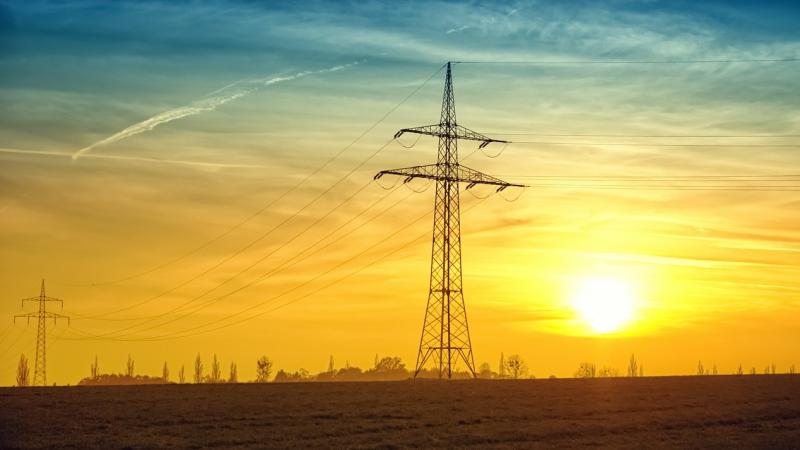
India, with the world’s second largest population of about 1.3 billion, still has about 15% of it living in the darkness without access to electricity. The Indian electricity system has resource and economic constraints on one hand, and environmental concerns on another. While many countries have switched over to renewable energy solutions for electricity, India is still lagging with just 20% of its electricity generating capacity, or 67033 MW, being based on renewable sources like wind, solar and biomass. As the demand for electricity is only expected to grow, how can we satisfactorily address above concerns?
In a recent study, researchers from the Indian Institute of Science, Bengaluru, have investigated if renewable energy sources and their large-scale integration into the electricity grid can address these concerns and help transition our electricity system into a ‘clean energy’ system. The study, published in the journal Energy Strategy Reviews, finds that using solar and wind energy systems could be a significant step to transition into a sustainable national electricity system.
In India, the NITI (National Institute for Transforming India) Aayog has been entrusted with the responsibility for providing research-based inputs and advises for achieving sustainable development goals. The current study evaluates four energy supply scenarios, proposed by the NITI Aayog, to achieve this goal.
The first scenario, called the ‘least effort scenario’, advocates minimal installations of new infrastructure to increase the country’s current electricity generation capacity. The second scenario, called the ‘determined effort scenario’, is relatively optimistic and allows some scope for mild additions of gas, coal, nuclear and hydropower generation. In the third scenario, called ‘aggressive effort scenario’, there is an aggressive push to increase energy generation in India from renewable sources.
The fourth scenario, which is the most optimistic, is called ‘heroic effort scenario’ and assumes that international oil companies find it attractive to invest in India. It requires a ‘free’ gas market where the government would have minimal controls on the market and no subsidies will be involved. This scenario is expected to add about 450 GW of electricity generating capacity by 2032.
In the first two scenarios, the demand for electricity exceeds the supply and thus cannot be adopted. However, the last two situations are not infallible either. With the current infrastructure, generating the projected quantum of electricity is not possible. If at all this electricity is generated, it still cannot be supplied through the available transmission & distribution networks. The researchers of the current study present various modifications to the last two scenarios by removing these infeasibilities in each case and judging them based on the National Electricity System Sustainability Index (NESSI) values.
The NESSI value is a score that indicates the reliability, affordability, growth rate and power generation capability of the installed systems and their emission intensity. It takes into account the power shortages and the effect of electricity consumption on the GDP (Gross Domestic Product) of the country, among others. In an ideal and sustainable system, the NESSI value is 1. Currently, the sustainability transition of the Indian electricity system starts with a base NESSI value of 0.3777.
The study projects that by 2031, the Indian electricity system can achieve a NESSI value of 0.51 by adopting the modified ‘aggressive effort’ scenario, which entails the availability of abundant nuclear resource by 2024, wind deployment of 60,000 MW and solar deployment of 1,00,000 MW. The study assumes that achieving this NESSI target will require India to attain 100% access to electricity in urban households and 80% in rural households, and total electrification of villages.
But, aren't our villages already electrified, you ask? The claim of 100% village electrification by the current government has a catch. By ‘village electrification’, what the government essentially means is the electrification of at least 10% of households in an inhabited village. So far, 8.2 million households still have no electricity and are doomed to darkness after sunset. Meghalaya leads the list of states with most homes without power, followed by Assam, Nagaland, Arunachal Pradesh and Uttar Pradesh. It is this gap that needs to be filled to say that every house has access to electricity by meeting the demand completely.
However, there is a significant cost associated with achieving this goal. The researchers estimate that following the ‘aggressive effort’ scenario would cost about ₹ 63.5 trillion and result in a power generation capacity of 924 GW, out of which 723 GW will be added in the intermediate years leading to 2031 of which 160 GW would be solar and wind. The proposed approach would also be environmentally sustainable and will considerably lower India’s carbon footprint. However, it could also lead to higher tariffs as wind and solar power will have to be integrated into the current system. This step would also reduce the system reliability because renewable energy resources are intermittent and variable.
The researchers expect that the disturbance in the economic and social dimensions, due to the transition, is a short term impact as compared to the lasting environmental sustainability.
“India, being a developing country, the poor needs to have some justice. The poor Indians cannot be expected to disappear without even experiencing some benefit of development. Given this, India’s priority should be on economic and social development. I agree on this for at least in the short- and medium-term. The important thing how ‘long’ is this short-term”, remarks Prof. Balachandra Patil from IISc, who is an author of the study.
The study assesses the transformation of the Indian electricity system in turning greener and highlights how the integration of renewable energy sources may result in a lower carbon footprint. However, the influence of these changes on the social, economic and environmental aspects need to be explored further, conclude the researchers.





